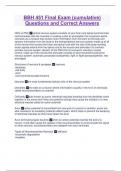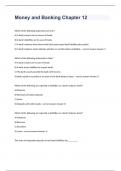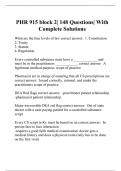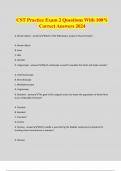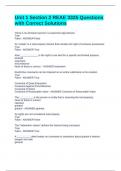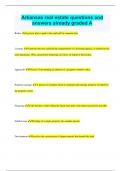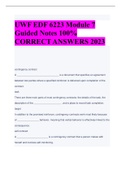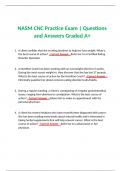Exam (elaborations)
BBH 451 Final Exam (cumulative) Questions and Correct Answers
- Course
- Institution
CNS vs PNS central nervous system-consists of your brain and spinal cord-the brain communicates with the muscles in creating a plan to accomplish the movement-spinal cord acts as a conduct that carries motor information from the brain to the body and sensory information from the body to the brainpe...
[Show more]
